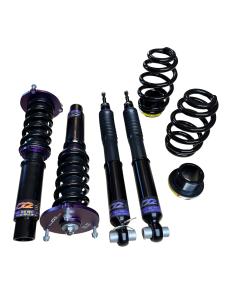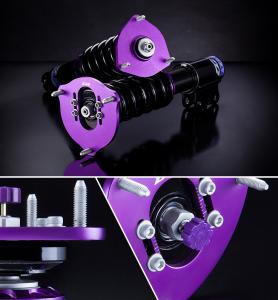Coilovers are a favorite update for car enthusiasts seeking to boost managing, regulate ride height, or achieve that perfect stance. Nevertheless, adding Coilovers is not as simple as bolting them onto your car—it requires preparing, information, and a bit of expertise. Whether you're a DIYer exploring suspension upgrades or an experienced receiver, here is what you need to know before embarking on your own coilovers installation.
What Are Coilovers and Why Deploy Them?
Coilovers, short for coil spring around distress absorber, are suspension systems that mix springs and bangs in to one lightweight unit. Unlike standard suspension setups, coilovers provide adjustability with regards to drive height and damping force, allowing drivers to fine-tune their vehicle's efficiency and aesthetics.

Vehicle lovers often select coilovers for these important advantages:
Increased Handling: Reduced body throw and better cornering stability.
Custom Changes: Target the journey height and rigidity to fit your operating needs—be it track performance or street comfort.
Enhanced Aesthetics: Obtain less stance for a far more extreme look.
Pre-Installation Checklist
Before you start the installation process, it's important to organize precisely to avoid complications. Listed here is the thing you need to think about before getting the hands dirty.
1. Right Coilover for Your Vehicle
Not absolutely all coilovers are universal. Ensure the coilovers you have picked are appropriate for your automobile make and model. Check always the manufacturer's requirements to ensure correct fitment.
2. Methods and Gear
Adding coilovers needs certain methods, including a torque wrench, floor jack, port stands, and plug wrenches. Having the proper gear could save you time and frustration.
3. Alignment Check always
Modifying your suspension may impact your wheel alignment. Following installation, an expert wheel place is vital to make sure appropriate handling, tire wear, and safety.
4. Follow the Recommendations
Each coilover kit has installation directions that shouldn't be skipped. Companies usually include precise torque adjustments and change recommendations tailored to your particular kit.
5. Budget Additional Time
Coilover installation may take hrs, depending on your experience level and the complexity of your car's suspension. Do not rush—accuracy is key for an effective install.

Screening and Changes Post-Installation
When your coilovers are fitted, screening and modifying them is another necessary step. Get your vehicle around various areas to judge the journey quality and handling. Fine-tune the journey level and damping options as needed seriously to balance comfort and performance. Hold a wood to note changes and their impact.
Take Your Suspension Game to the Next Level
Installing coilovers converts the way in which your vehicle seems and grips, but the procedure requires careful planning and execution. By following these measures, you are placing your self up for success—and making a more pleasant operating experience. Always remember that protection and detail are as important since the elements you're using.
